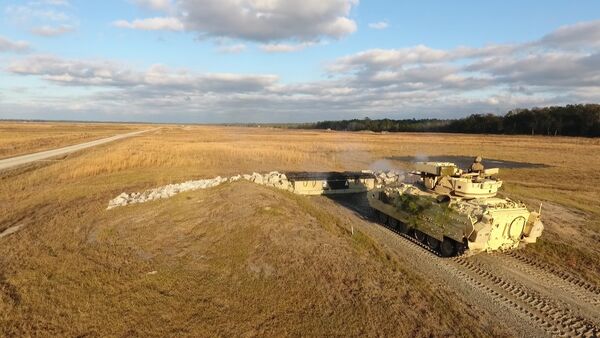
Shown here is a Bradley vehicle vehicle at Fort Stewart, Georgia in 2016. The US Army has selected five OMFV proposals to begin design work aimed at replacing the Bradley fleet. (US Army )
Before the US Army awards vendors with contracts to produce a ‘physical' prototype of the Optionally Manned Fighting Vehicle (OMFV) it must first provide lawmakers with additional details about how it devised the requirements, according to pending legislation.
House and Senate lawmakers have reached an agreement for the fiscal year (FY) 2022 defence authorisation bill but as of 8 December it had not been approved by both chambers and signed by the president. Once signed into the law, the bill will require army leaders to submit a report about the analysis used to create the “underpinning” of the OMFV requirements before providing vendors with money to build their prototypes.
The ongoing OMFV programme is the service's fourth attempt at developing a replacement for the M2 Bradley infantry fighting vehicle. In early 2020 the service cancelled its OMFV prototyping competition in order to revisit the requirements and acquisition timeline. Leaders then decided to slow down and provide interested vendors with more flexibility to design the future vehicle. As part of the plan, they crafted a set of characteristics–survivability, mobility, growth, lethality, weight, logistics, transportability, manning, and training–in lieu of stringent requirements that have previously hamstrung the effort. For example, last time around prospective bidders struggled to balance the added weight associated with survivability, against transportability that required two to fit inside a C-17 transport aircraft.
The service then selected five industry teams to participate in a 15-month concept design phase: American Rheinmetall Vehicle, BAE Systems, General Dynamics Land Systems (GDLS), Oshkosh Defense, and Point Blank Enterprises.
Looking to read the full article?
Gain unlimited access to Janes news and more...



